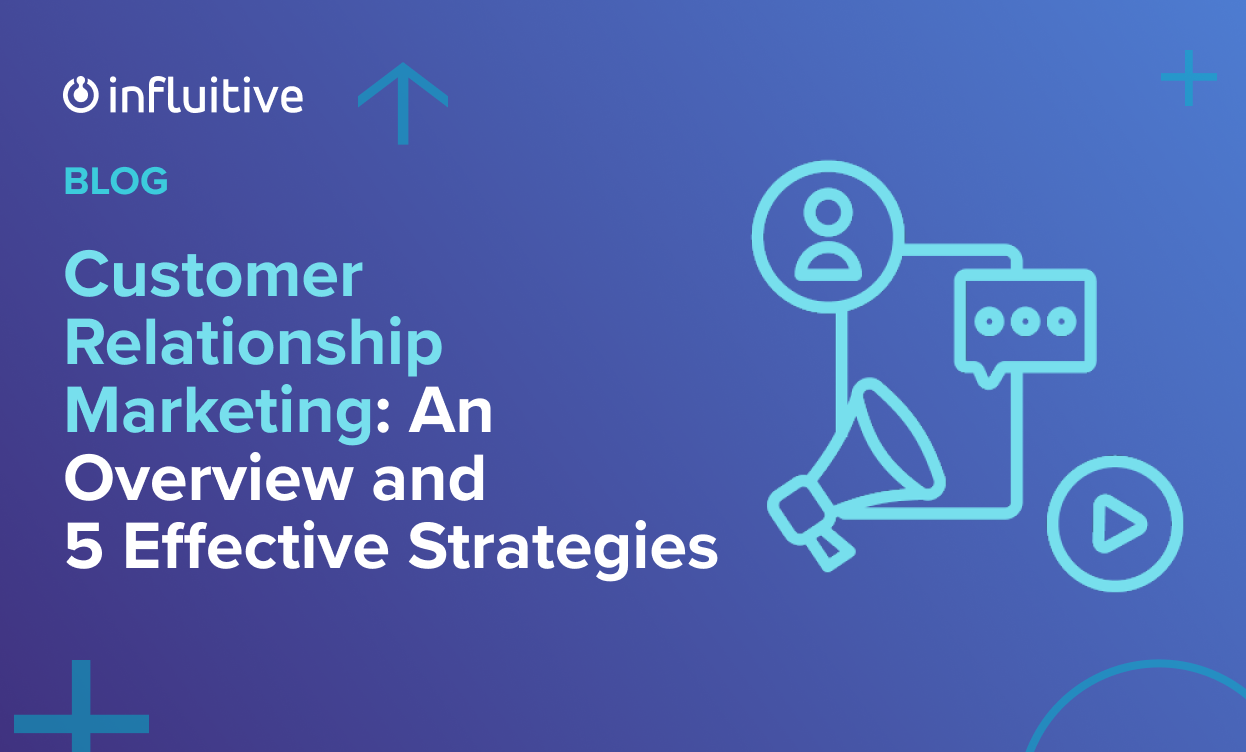Today, marketing is more than just selling products. The emergence of technology has led to customer demand for personalized experiences and tailored services.
The key to enhancing customer experience is building relationships. Consequently, companies are increasingly implementing customer relationship marketing techniques to improve their interactions. Marketing for relationships helps brands create an emotional bond with customers, which increases customer satisfaction and loyalty.
But how do you create relationships through marketing? In this article, we’ll look at customer relationship marketing, its benefits, and how to implement effective customer relationship marketing in your company.
What Is Customer Relationship Marketing?
Customer relationship marketing is a marketing strategy focusing on building customer relationships. It involves collecting data to better understand customer needs and preferences and then using that information to create targeted marketing campaigns.
Focusing on customer relationships in marketing can help you provide more effective and meaningful interactions. Enhancing the customer experience can increase customer loyalty and satisfaction, increasing sales and profits. You can also use customer relationship insights to identify opportunities for new products and services that meet your customers’ needs.
Relationship marketing vs. relationship management
Although they sound similar, customer relationship marketing and customer relationship management (CRM) differ in focus. Relationship marketing focuses on creating customer relationships to drive loyalty and increase customer satisfaction. It includes activities like sending personalized emails, building loyalty programs, and offering discounts.
On the other hand, CRM employs technology to track customer data and manage customer relationships. It involves collecting, managing, and analyzing customer data to make better decisions about customer interactions. CRM and relationship marketing work together to improve customer experience and increase customer loyalty.
Benefits of Customer Relationship Marketing
Successfully interacting with your customers will enhance their experience with your brand, but they aren’t the only ones who benefit. Relationship marketing has numerous benefits for your business as well, including:
- Reduced acquisition costs: Retaining existing customers decreases the need to acquire new ones. In addition, customer service costs may drop as loyal customers become more knowledgeable and self-sufficient.
- Elevated retention rates: Building customer relationships that last also builds customer loyalty. Customer loyalty establishes repeat business and ensures steady revenue flow.
- Improved ROI: Relationship marketing increases ROI by reducing acquisition costs and ensuring customer retention. Marketing efforts that yield higher ROI fuel further customer engagement initiatives.
- Increased sales: Customer loyalty leads to repeat purchases and increased spending. Returning customers provide a consistent revenue stream, enhancing financial stability.
- Boosted brand awareness: Loyal customers often become advocates, sharing the brand with others. The promotion brings in new customers without additional expense and enhances the brand’s reputation.
- Optimized Customer Lifetime Value (CLV): As customers remain loyal to your brand, their total profitability increases. Higher CLVs can lead to higher revenue, increased profits, and more ROI.
Discover our client Jamf’s advice for maintaining customer relationships and building personal connections at scale.
Understanding the 5 Levels of Customer Relationship Marketing
There’s no one-size-fits-all approach to building a relationship with your customers but understanding the customer lifecycle can help you standardize your messaging. Here are the five steps of customer relationship marketing and how your messages should align.
Basic marketing
Basic marketing involves straightforward tactics that promote your product or service, such as simple messages, pricing schemes, or promotions. Following a sale, there is often little follow-up or sustained engagement.
Messaging at this stage should be compelling, straightforward, and product-focused. The goal is to highlight the benefits and features that make your offering stand out, making it more appealing to buyers.
Reactive marketing
Companies engage in reactive marketing by inviting customer feedback and addressing customer concerns. The level of interaction is a bit higher than basic marketing, as businesses react to customer input and concerns.
Messaging during the reactive stage should emphasize availability and attentiveness. Let your customers know their voices matter and your team is ready to assist them. Caring and responsive communication is essential.
Accountable marketing
Accountable marketing emphasizes a business’s dedication to its product and service and its commitment to customer satisfaction. A vital aspect of this strategy involves monitoring customer satisfaction and addressing any issues as quickly as possible.
At this level of messaging, it’s crucial to convey responsibility and trustworthiness. Demonstrate your commitment to your customers by reassuring them that your product is reliable and your customer service is unwavering.
Proactive marketing
Rather than reacting to customer needs, preferences, and issues, this level of marketing anticipates them. Proactive customer marketing aims to reinforce your relationship, continuously improving and refining the customer experience and preventing problems before they occur.
Strategic thinking and innovation should be the focus of your messaging in this phase. Communicate your commitment to innovation and demonstrate your efforts to elevate customer satisfaction and experience.
Partnership marketing
A partnership marketing strategy aims to benefit both businesses and customers. This stage involves understanding long-term customer needs, teaming up, and creating value.
Keep your communication focused on connection and teamwork during the partnership stage. To build customer loyalty, it’s essential to celebrate collaboration and emphasize shared goals.
5 Strategies for Effective Customer Relationship Marketing
Building quality, lasting bonds with customers is important for long-term success. Here are a few customer relationship marketing strategies that can help you develop and strengthen customer relationships.

1. Connect through valuable content
Consistently delivering value strengthens the relationship between your brand and your customers. You can create a connection with your customers by providing high-quality, insightful content through emails, blogs, and other media. As well as showcasing your products, you’ll deliver solutions, spark interest, and solidify your brand’s reputation as a dependable and knowledgeable resource.
2. Personalize the customer experience
Customers want tailored experiences to fit their lifestyles, preferences, and needs. A personalized experience goes beyond addressing customers by name and incorporates customized offers, targeted product recommendations, and tailored content. By individualizing the customer experience, you show appreciation and increase customer satisfaction while building customer relationships.
3. Listen to (and apply) customer feedback
A company that encourages and recognizes customer feedback demonstrates a commitment to its customers. Get a deeper understanding of customer needs by conducting surveys, interviews, and focus groups, then analyze the feedback to identify trends and formulate improvement strategies. Customers are more likely to remain loyal when they see tangible results from their suggestions.
4. Use automation to your advantage
Personalized, timely, and relevant communications demonstrate to customers that a brand values their engagement and anticipates their needs. Customer loyalty and engagement platforms with automation can streamline email sequences, chatbot replies, and post-purchase offers so you never miss a chance to connect. As a result, you can focus on more meaningful tasks and strengthen relationships simultaneously.
5. Establish a customer loyalty program
Customer advocacy programs are key to retaining and rewarding your most loyal customers. A well-designed loyalty program displays appreciation and exclusivity, enhancing customer relationships and encouraging repeat business through special perks, rewards, and discounts. Providing incentives can also boost your visibility and reputation by encouraging positive word-of-mouth.
Learn how FloQast’s Head of Customer Marketing and Community relaunched and grew a successful customer advocacy program.
Build Stronger Bonds With Influitive
Effective customer relationship marketing involves connecting, personalizing, listening, automating, and rewarding in ways that resonate with your customers. Creating strategies that form lasting bonds between your brand and customers is the key.
Influitive makes relationship marketing even more powerful by offering tools that simplify and enhance customer interactions. Ready to take your strategy to the next level? Learn how Influitive can empower your customer relationship marketing, or schedule a demo to see it in action.












































